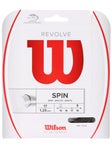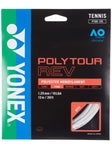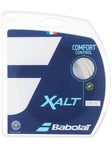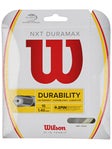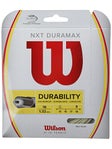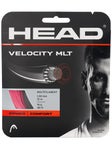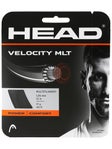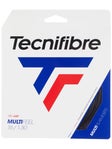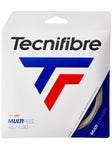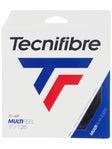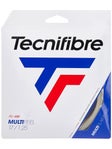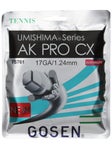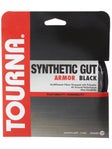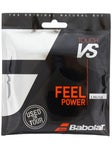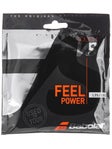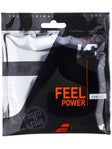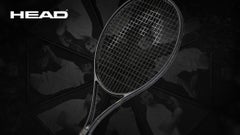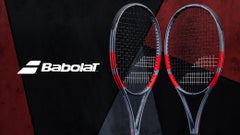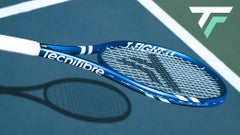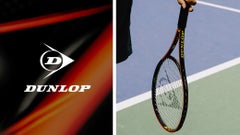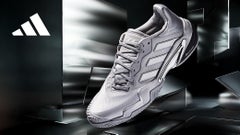Friction Kills: Picking Tennis Strings for Better Durability & Spin
Friction plays such a big role in your string's durability and ability to create spin, and we share some of our favorite low-friction strings that can help extend the life of your stringbed. Find the best low-friction picks from all the string types (polyester, multifilament, synthetic gut and natural gut).
Why Friction Matters
One of the leading killers of stringbeds is friction. The greater the inter-string friction, the more severe the abrasive wear, and thus the higher the likelihood of premature breakage, not to mention the need for constant manual straightening. By contrast, low-friction strings not only help extend the life of your stringbed, but they also boost the rotational energy (spin) of the ball through deflection and return ("snap back"). Given their immense benefits, let's take a deeper dive into low-friction strings across the major string groups.
Low-Friction Picks by String Type
| String Name | String Type |
| Yonex POLYTOUR REV | Polyester |
| Wilson Revolve | Polyester |
| ISOSPEED Black Fire | Polyester |
| Babolat Xalt | Multifilament |
| Wilson NXT Duramax | Mulitfilament |
| Tecnifibre Multifeel | Multifilament |
| Head Velocity MLT | Multifilament |
| Gosen AK Pro CX | Synthetic Gut |
| Tourna Synthetic Gut Armor | Synthetic Gut |
| Gamma TNT2 React Pro | Synthetic Gut |
| Babolat Touch VS | Natural Gut |
Polyester
Polyester monofilaments have the lowest friction among all string types, allowing them to withstand the violent sliding action caused by the punishing mechanics of the world’s most elite players. Although polys can notch and experience other surface indignities over time, they generally have less need for friction-reducing technologies. However, here are a few polys that incorporate such features to slow down frictional wear.
- Yonex POLYTOUR REV - SIF (Silicone Oil Infusion)
- Wilson Revolve - UHMW (ultra-high molecular weight coating)
- ISOSPEED Black Fire - Liquid Wax Coating
Multifilament
Nylon multifilaments tend to have much higher friction than their polyester counterparts, making them more prone to the kind wear and tear (e.g., notching and fraying) that leads to premature breakage. In addition to premature breakage, high friction also causes playability issues; the displaced strings accelerate tension loss and can slightly distort the exit angle of your shots. Although no multifilament can mimic the low-friction characteristics of a poly, here are a few multis that incorporate friction technologies and perform better in this area:
- Babolat Xalt - Silicone coating
- Wilson NXT Duramax - Abrasion Shield technology
- Tecnifibre Multifeel - SPL anti-abrasion coating
- Head Velocity MLT – High molecular PA surface
Solid Core Nylon (Synthetic Gut)
Like multifilament strings, solid core nylons tend to have high friction. In addition to premature wear and breakage, they experience performance issues due to chronic string displacement. Also, given their budget-friendly prices, these strings are less likely to have advanced friction-reducing technologies. That said, here are a few solid core nylons with above-average friction properties:
- Gosen AK Pro CX - Silicone coating
-
Tourna Synthetic Gut Armor – Polyester filament wrap
- Gamma TNT2 React Pro - Silicone coating
Natural Gut
Natural gut has seen a steady diet of technological improvements over the years, including ones that improve durability through friction-reducing technologies. The king of natural gut, Babolat Touch VS, gets high marks in this area, as it deflects and returns to its original position impressively well, especially in the early phases of its life. Even more impressive is how well it pairs with polyester, which results in an extremely low-friction string bed, one that has proven itself at the pro level with some of the game’s most elite players.
Technical Note on Spin
Nylon and natural gut strings degrade faster than polyester monofilaments and lose their "snap back" more rapidly. Secondly, it’s important to note that "snap back" is not the sole factor when it comes to maximizing ball rotation. Generating optimal spin also hinges on high stroke speed, which is more easily attained with stiffer strings due to the enhanced control they offer, allowing players to swing faster without having to worry about the ball slipping out of its intended trajectory. This is a big reason why polyester strings, known for their high stiffness and truer launch angle, outperform softer nylon counterparts in spin performance.


